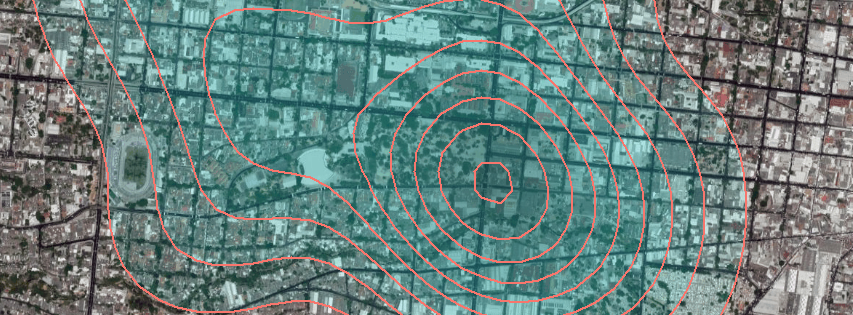Our recent experience with Reacción on social mapping has brought us into the murky waters of urban behavior analysis. Over the past couple of months we have been working together with people from urban communities of San Salvador for a social development program, backed by USAID and aimed at violence prevention and community improvement.
Our initial work consisted of the evaluation of the initial situation of multiple communities regarding different variables related to resilience, which we divided them between social and environmental. We drew from a good experience in participatory mapping which we developed as part of a workshop in Santiago for the Fab13 conference, on which we invited inhabitants of a local community to discuss their problems with the workshop participants, to draw upon from and propose IoT applications.
For this case, the goal was to evaluate perceptions in communities where different problems were varied and complex, and therefore, would be difficult to map. In order to solve this problem, we designed games to explore the social perception of communities towards certain spaces. The design restrictions that were taken into account are:
- Vulnerability is a broad term, and similar to the term ‘poverty’, can be multidimensional, which means that it has to be analyzed from different perspectives in order to obtain a complete view.
- Different actors are affected in different manners by threats in the surroundings.
My favorite activity consisted of a card game made specifically to map social perceptions. A moderator was asked to draw from a card stack a set of cards with scenarios and locations that formed phrases, to which participants responded to with flags that had red and green sides. Sound familiar? Yes, you might be tempted to think of a version of Cards Against Humanity (although in this case it is for humanity, for a change), but it can also remind you of StreetScore, MIT’s Media Lab project for comparing street variables by using AI. The truth is that little pieces of both were on the back of my head when this game was coming together.
In the end, the result was a set of maps that analyze four social variables: personal space, community interaction, road safety and social violence, which will serve to study the behaviors of people in relation to the city’s upcoming urban development.
